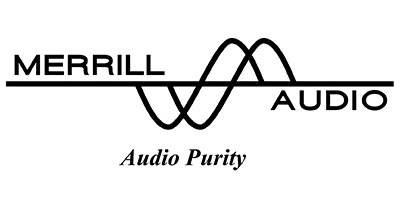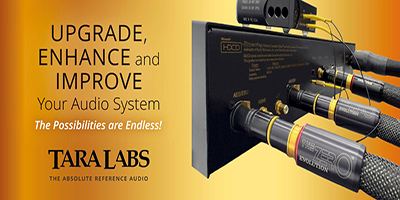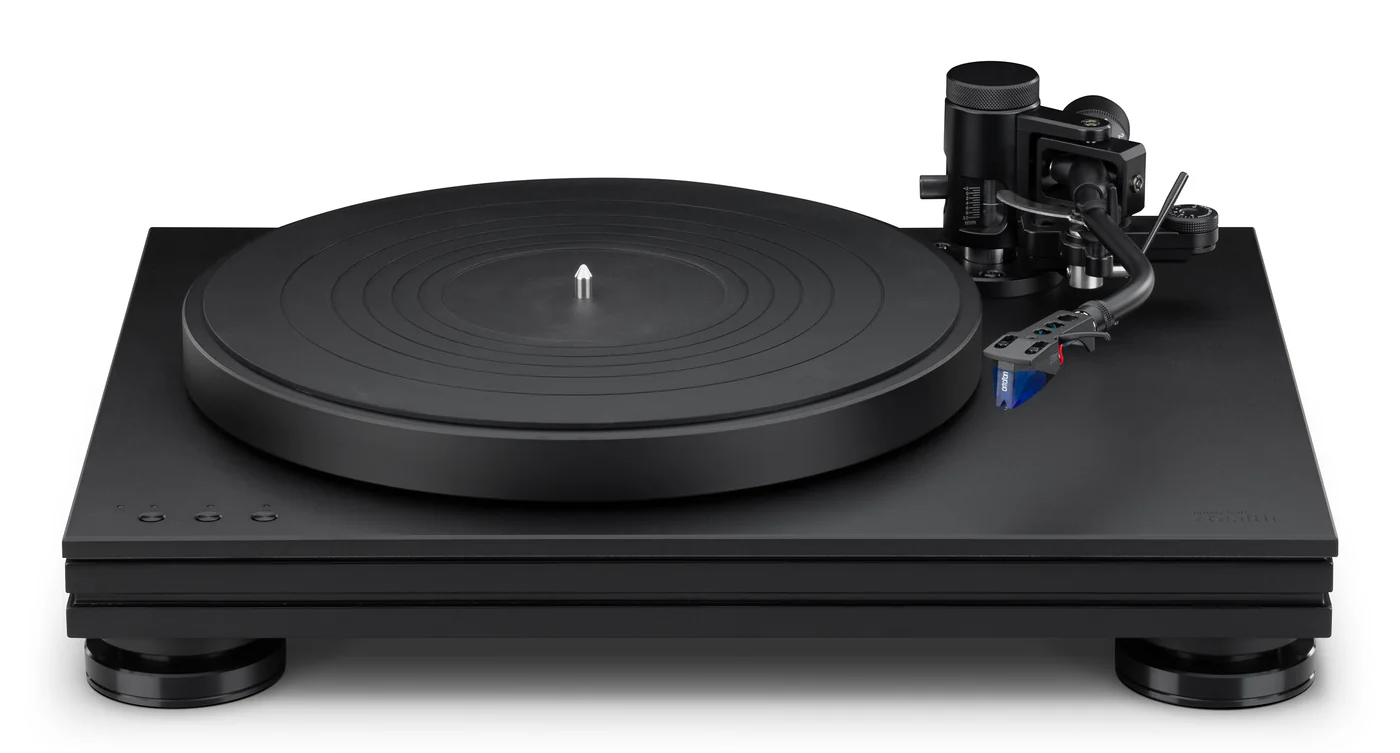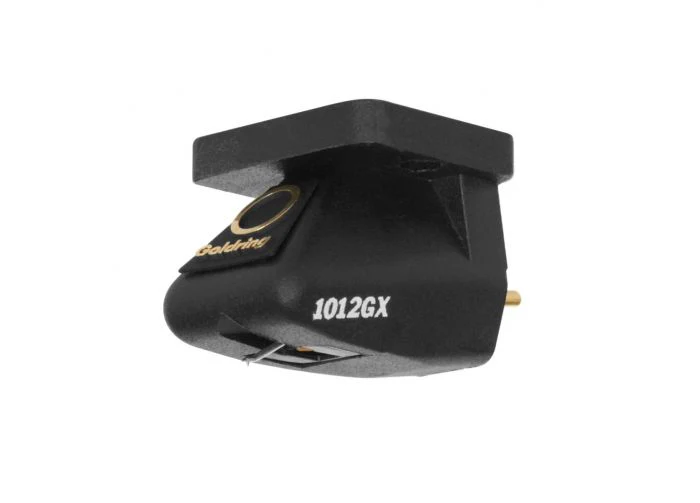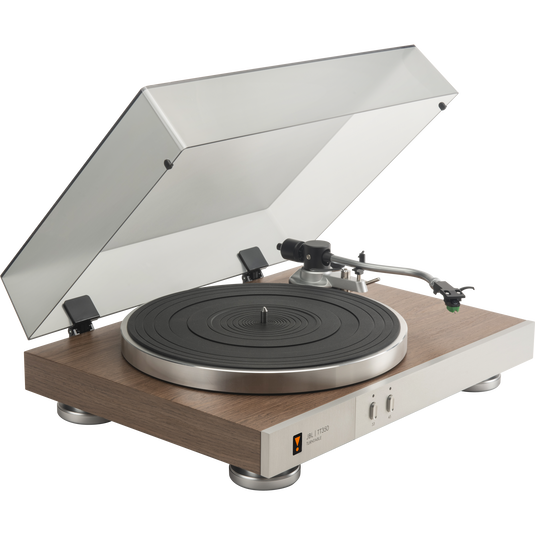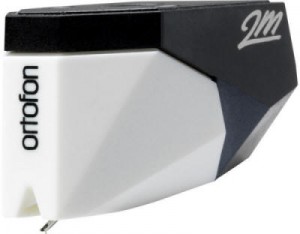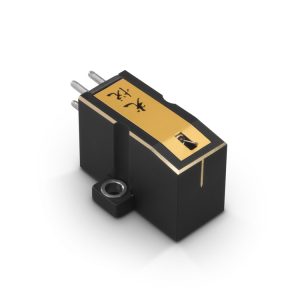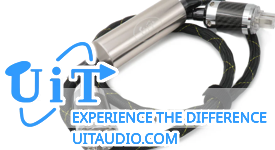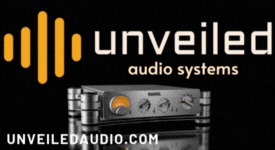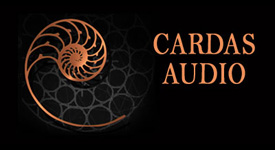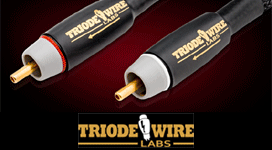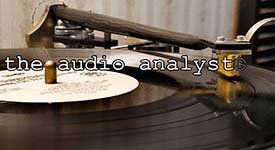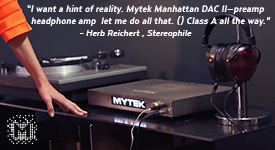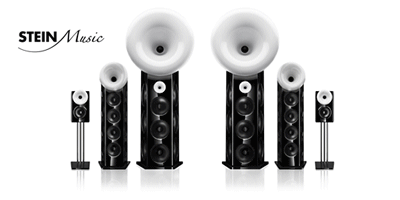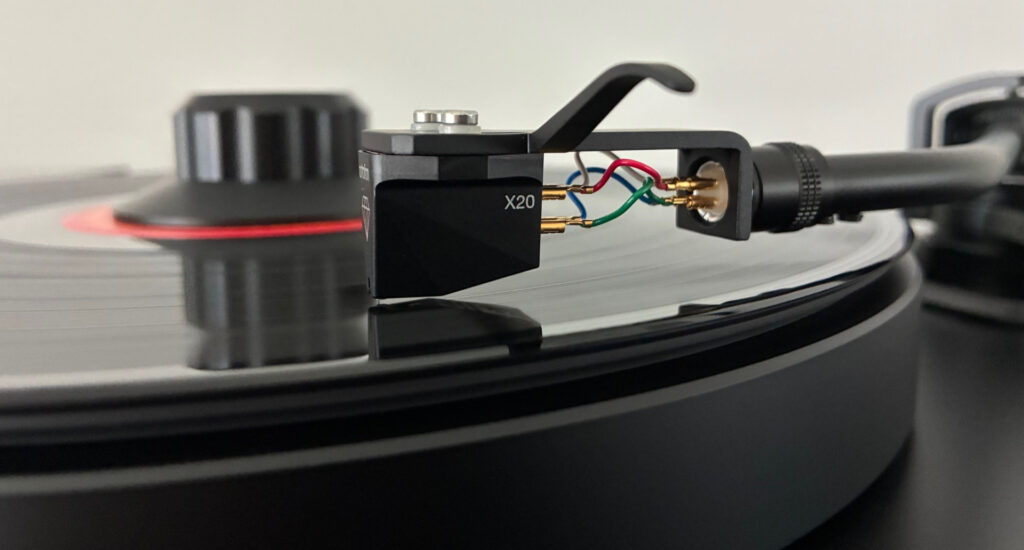
Hard to believe, but the first time I reviewed an Ortofon cartridge for PF was way back in the fall of 2008 (read it HERE). The company had just introduced their then-new 2M series of affordable moving magnets that were notably different looking and sounding than other price-competitive cartridges, the basic architectures and styling of which often dated back to the 1980s (or even 1970s).
At the time, I wrote that the 2M Blue catapulted budget-friendly, moving-magnet performance into the modern era by virtue of its surprisingly resolving and insightful nature for such a low price. It's still on sale and has since become not only a default next-step-up cartridge recommendation for those replacing the starter cartridge on entry-level tables, but also a ubiquitous standard-equipment inclusion on higher performing turntables like Music Hall's $1649 Stealth (reviewed HERE) thanks to its ability to punch above its weight class. Just $199 then, it's now priced at $239—a mere 20% increase over 17 years.
I reiterated all that because it highlights what Ortofon has been really good at over the years: consistent product improvement through smart innovations at very fair prices. And with the introduction of their new MC X series of low-output moving coil cartridges, that tradition is stronger than ever.
Take the subject of this review, the MC X20. It's number two on the rung of four models that will eventually replace the Quintet series of low-output moving coil cartridges, ranging from $369 up to $999. The entry level MC X10 uses a standard elliptical stylus bonded to an aluminum cantilever, while the MC X20 reviewed here upgrades that to a nude-mounted diamond for reduced tip mass and better tracking. The MC X30 ups the ante with a fine-line stylus cut, while the range-topping MC X40 sports a nude Shibata diamond on a rigid boron cantilever. Nothing mindblowing there…the line basically follows the same formula as the 2M series.
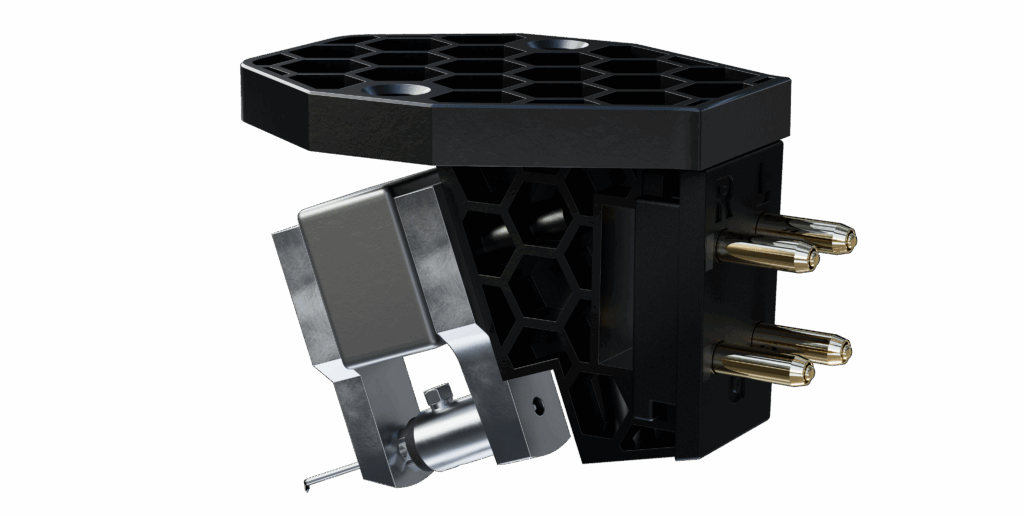
But here's where the innovation part comes in. Instead of simply crafting a fancier body design that looks cool, Ortofon uses an injection-molded, honeycomb-structured stainless-steel frame on all models. Honeycomb structures are used in high-tech aircraft, among other applications, because they're highly rigid but also lightweight—two attributes which almost always increase the performance of a phono cartridge. Ortofon also touts a new magnet system, plus coils now wound with high-purity silver wire and the use of more advanced design and rubber in the suspension system, which appears successful since the company now recommends a reduced tracking force of 2 grams for the MC X series compared to 2.3 grams for the Quintet series it replaces.
Over and over again, I've experienced that a more advanced body can make for a significant improvement. Ortofon's 2M series is said to use a generator that evolved from the older OM series, but the chiseled and more rigid frame and improved materials somehow let the 2M deliver a more precise and organized performance in my own comparisons of both. Ortofon also has significant experience supplying rubber compounds to other companies, so here again they've leveraged an opportunity to squeeze more performance out of a suspension that, by nature, can't really deviate too much from the same basic formula used in all conventional phono cartridges.
There's more good news. Even in today's crazy US economy, Ortofon has priced the subject of this review at $629. That's surprisingly reasonable considering the Ortofon Rondo Red moving coil I reviewed HERE way back in 2013 was priced at…seriously?…$639. It was no less novel for the time, using a wood-dust and resin matrix for the body and probably a similar cantilever and nude diamond as the MC X20. Yet the new model is somehow better and cheaper. (Tariffs, for those of us in the US, could shift the value equation so if you want one, now would be a good time to pull the trigger.)

It seems to me that, given the more limited audience for moving coils versus moving magnets, Ortofon have managed to keep costs down at least in part by using the same basic body design for all four models, differentiated only by the silkscreened model names rather than different colors and construction as with some of their other model ranges. The cartridges are also conveyed in fairly simple packaging, which I absolutely love because that means you're not paying for a fancy box which adds nothing to its performance.
It would be reasonable to assume that, judging by the X20's ambitious construction methods, it might deliver a technically infallible but somewhat sterile sound. Nothing could be further from the truth. The X20 is different than, but happily not miles away from, the warmly engaging Rondo Red of 2013. Both cartridges are silky and refined. Both also deliver excellent low-end extension and smooth treble, if not the last word in airiness. But the newer X20 benefits from a generous extra schmear of precision: a little more of the leading and trailing edges of notes, a bit more fine texture and less gloss, more layered and dimensional bass and a more open soundstage.
Right out of the box, the MC X20 sounded really good: neutral but not stiff or constrained or showing the typical signs of a cartridge that needs significant breaking in. That's always welcome when you're dealing with a cartridge that does not have a user-replaceable stylus; after all, who wants to waste part of its lifespan waiting for it to break in? That's not to say that it didn't improve, albeit subtly, over time—but not so much that the first 20 hours or so were any kind of unbearable slog.
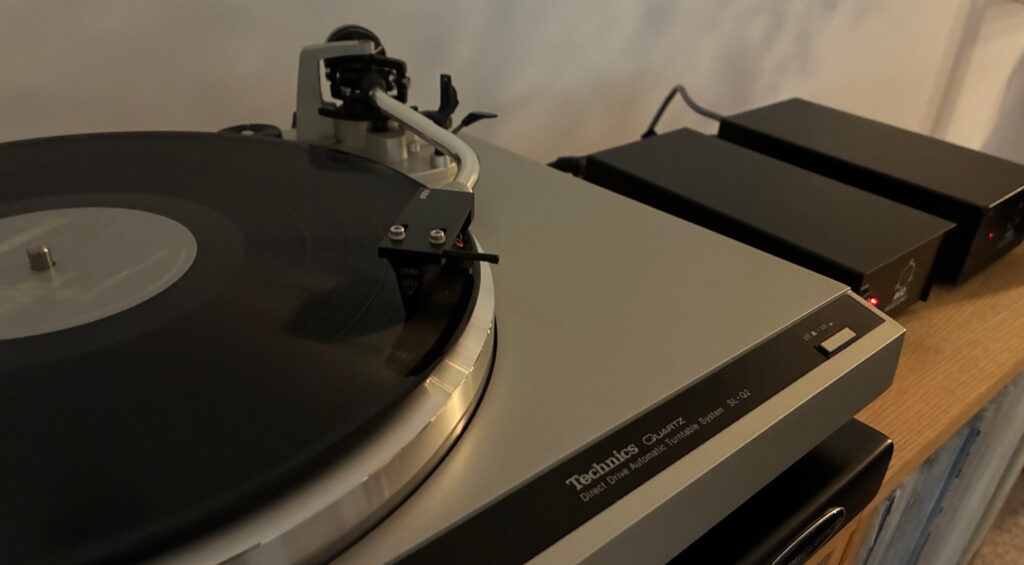
The soundstage this thing throws is, for the price, hypnotically big—even when I first installed it in a rather inexpensive (but also rather capable), circa 1979 Technics SL-Q2 direct drive in fine fettle. Partnered with the still-awesome-after-all-these-years Avid Pulsus phono preamp ($2399 now and reviewed HERE), it opened up even further over time, getting wider and deeper and more layered. Wow. And that's on a table which, despite bettering many sub-$1000 current models in technical excellence, is still worth hundreds less than the Ortofon's price.
It's also fast. And vivid. When I moved it to Audio-Technica's recently introduced AT-LP8x turntable ($1299), it produced a sound that's textured, fully formed, natural, but also decidedly not an exercise in checking off all the usual boxes in a cynical attempt to satisfy audiophiles at the expense of true-to-life naturalness or cohesiveness. How do you like your cartridges? Do you demand they tell the truth, but not in a dry, Excel-spreadsheet kind of way? With the indisputable facts to be clearly communicated, unassailably correct, but also extrapolated upon in a way that constitutes genuine storytelling? Then the MC X20 might be your cup of tea. After all, we're talking about music reproduction here. A good cartridge needs to reinterpret and reassemble all the parts of a song, not merely read the groove.

The level of subtlety here cannot be overstated. That simply takes time to appreciate. I found myself pulling out long records that I typically don't often play like Fleetwood Mac's Tusk or Keith Jarrett's Sun Bear Sessions because I knew I'd be rewarded by the involving nature of the MC X20. You sink into it like a warm bath. To me, the sound is kind of Marantz-like: smooth but detailed, maybe a little polite on top and very, very slightly warm or perhaps just rich. Speaking of subtlety, the level of microdynamics this cartridge delivers is highly commendable and generally not nearly equaled by moving magnet models at this price level. And channel separation was notably stupendous.
Adding all that up, if my experience is typical, you should therefore not expect to be wowed at first listen. The MC X20's primary strength is its addictive sense of maturity and rightness—unlike some cartridges that initially impress with a big blast of conspicuous detail, or some other audiophile trope. This ain't that. Far from it. It gets under your skin over time, and not a long time.
In technical terms, the MC X20 asks little more than an inexpensive moving magnet would, other than a capable phono preamp. Loading? Ortofon's literature recommends >50Ω and their US office suggested 100Ω in the context of my system. In fact, I found little difference between the two values. It sounded clear and quiet and open with the inbuilt phono preamp in my Yamaha A-S1200 integrated amp (reviewed HERE) which uses a head amp with a fixed loading of 50Ω, and ever so slightly more so using the 100Ω setting on the standalone Avid Pulsus. If you're the owner of an A-S1200, as I am, I highly, highly recommend the MC X series as a must audition; it partners wonderfully.
It used to be that a mid-priced moving coil demanded a rather excellent arm. The MC X20 wasn't super fussy in this regard, either. While the tonearm on the Audio-Technica AT-LP8x is very solid, the JBL TT350 feels less so, and yet it worked fine there too, not to mention on my ancient Technics SL-Q2 which is in great shape but nonetheless approaching 50 years old. I'd say that indicates Ortofon's resonance control and sophisticated design pick up some of the slack from less-than-perfect arms. Normally, I wouldn't recommend a low-output moving coil on tables in the $500 range, but while the MC X20 would be overkill, I would not be hesitant to gamble $369 on the more modest MC X10.
I'm hard-pressed to talk about downsides, since I can chalk them all up to the limits of the Ortofon's stylus shape. Cymbals and certain other high frequencies are delicate but have a bit of grain if I really listen in. And, despite the sizable soundstage, there was perhaps not as much air and space around individual instruments as you'd likely get by moving up to the finer stylus profiles of the MC X30 and X40. That's about all. Spend more, get more.
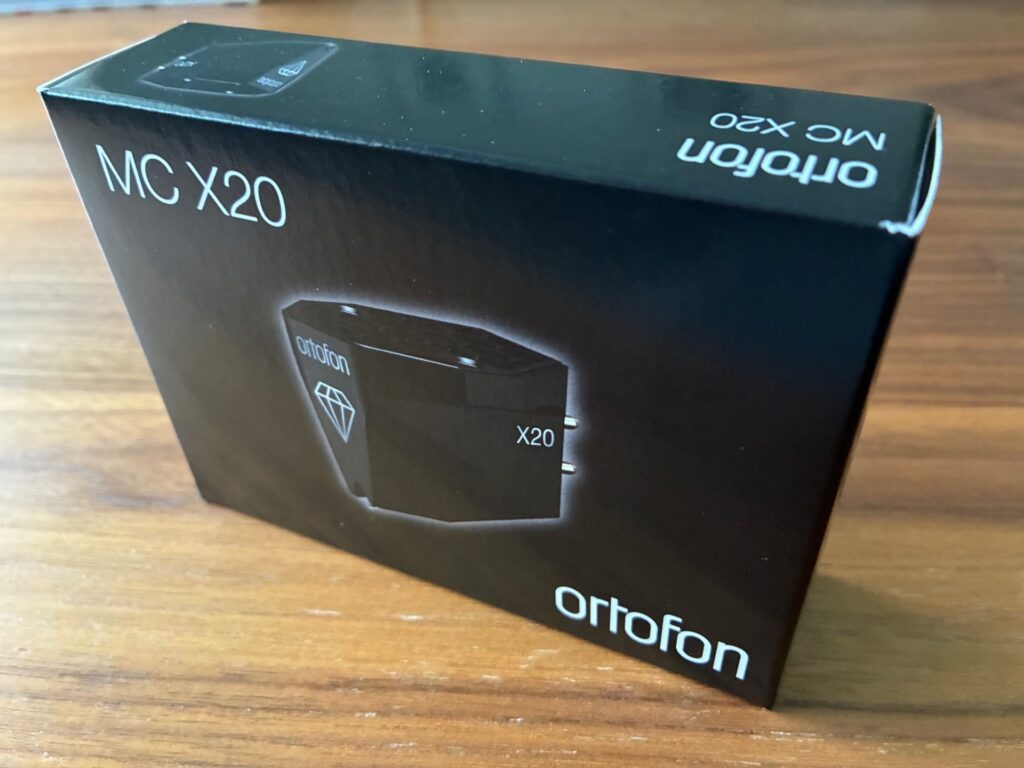
Of course, cartridges come in many flavors, and the almost identically-priced Audio-Technica AT33PTG/II ($649) offers more speed, detail and at least perceived air, likely due to its boron cantilever and microlinear stylus. That's an automatic win, right? Well, not so much, since the AT is also leaner and more clinical sounding compared to the Ortofon, a plus bit lighter in the bass department. It also likes to see at least 100Ω according to Audio-Technica, so it's a little less flexible in terms of loading and also has very slightly lower output. To me, the Ortofon, while being slightly less transparent, offers a more fleshed out and cohesive sound. That's a matter of taste, but what's undeniable is how the MC X20, in some ways at least, does more with less: a less exotic stylus, a less exotic cantilever and less fuss.
When Ortofon swings for the fences, they really connect. It has been awhile since they really went nuts on the affordable end of the cartridge market, but the new MC X series is just as significant as the 2M series was. While there's only so much you can change about a phono cartridge and still have it be a phono cartridge, Ortofon really managed to innovate little details that matter and bring them to market affordably. While the MC X moving coil series will never be as popular as the 2M series simply because of its low output and less broad compatibility with the majority of phono preamps, it does open the door for more modest setups to try out a moving coil model. And on the other end of the spectrum, it delivers more than I expected when used with tables and preamps costing several times its price.
We should be thankful that companies like Ortofon continue to lavish this kind of considerable attention on products with a limited audience compared to moving magnets, and at prices that are very accessible. This is pure speculation, but something tells me it's hardly pure altruism. Rather, I would not be surprised to see the company unveil a new line of moving magnets using the honeycomb body structure and next-gen rubber damping of the MC X series. It would probably kick the 2M series up to another level, just as it does here versus older and similar Ortofon LOMCs.
Back to the MC X20 specifically, which to me is one of those "sweet spot" products that seemingly does it all until you compare it to something considerably more expensive. As a confirmed cartridge junkie with a drawer full of them at any given time, this is in the top 10% of everything I currently own. It's special. So, provided you have a good turntable in the $1000+ range, a phono preamp that will do justice to a low-output moving coil, and a preference for overall listenability and musicality over minute detail, I tend to think the X20 will get you about as far as you can go for a sensible price relative to the rest of the system. It certainly classed up every system configuration that I paired it with.
Ortofon MC X20 phono cartridge
Retail: $629
Ortofon
Specifications
- Channel balance at 1 kHz: 0.5 dB
- Output voltage at 1 kHz, 5cm/sec: 0.4 mV
- Channel separation at 1 kHz: 25 dB
- Frequency response 20 Hz - 20 kHz, +/-1 dB
- Compliance, dynamic, lateral: 15 μm/mN
- Cantilever material: Aluminum
- Stylus type: Nude Elliptical
- Stylus suspensions: Ortofon exclusive
- Coil system: Quad coils
- Tracking force, recommended: 2.0 grams
- Internal impedance, DC resistance: 6 Ω
- Coil wire material: High-purity silver
- Cartridge weight: 8.6 grams
- Recommended load resistance: > 50 Ω


